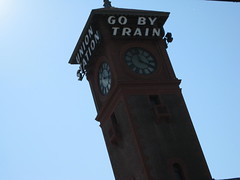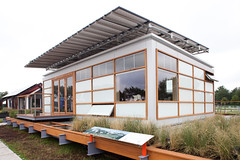CTAA's Director, Dale Marsico, provides historical context for the Federal Transit Administration's proposed changes to current policies on implementing the requirements of Title VI of the Civil Rights Act of 1964.
[K]eep in mind that it is fair for us to be asked if we are living up not just to our responsibilities on Civil Rights under Title VI. Remembering that these proposals represent something more for us than a typical government regulation, I believe that everyone who has questions or concerns about them use the full range of comment procedures and meetings to discuss them with the FTA. I'd also urge you to suggest different strategies to provide the kind of factual information that tells our ongoing story of the role we play in expanding Civil Rights for everyone.Visit the FTA site for information about the proposals relating to civil rights and environmental justice and the ADA.
CTAA has a new blog, Truth in Transit. The blog contains stories about transit systems, rider experiences, and funding. It is a resource for community and public transportation leaders and advocates to share best practices in building effective, strategic relationships with local, state and federal elected officials and with other key partners. I really like the 101 piece written by a Wisconsin legislator about how to approach political leaders. The advice applies everywhere and beyond transportation.
[Portland's Union Station.]
American Public Transportation Association
APTA releases the APTA Primer on Transit Funding - The Safe, Accountable, Flexible, Efficient Transportation Equity Act: A Legacy for Users, Extensions, and Other Related Laws, FY 2004 Through FY 2011, a report that explains all of the transit funding programs and how many dollars are authorized and appropriated for them. In another report, APTA analyzes what will happen if cost-cutting proposals become the law of the land in the next reauthorization. An Analysis of Proposed U.S. House of Representatives Actions and Their Impact on Public Transportation looks at impacts on riders, jobs, service, maintenance and new projects.
AARP
AARP has written a report about the safety and mobility considerations involved with golf-cart-like vehicles, called Low-speed vehicles (LSVs). Use in specific communities is analyzed as well as accident rates. Use of these vehicles has increased, though they are not designed for car-like speeds or impacts.
Map of Senior Transportation Programs
The Beverly Foundation has compiled a map of senior transportation that shows the number of programs in each state, where they are and a link to further information about each program.
Local Stories
Ohio Valley of West Virginia announces plans to revisit its coordinated transportation plan. The study's director sees challenges in mobility needs as well as perceived barriers of liability and funding to interstate service. See the local news video.
Like many areas of the country, Palm Beach County, Florida, is seeing an increase in transit ridership. This increase remained even during a dip in gas prices. Sundays, the only day for which there was no increase, remained steady in ridership, though service has been cut.
[Tile art on Portland building.]





